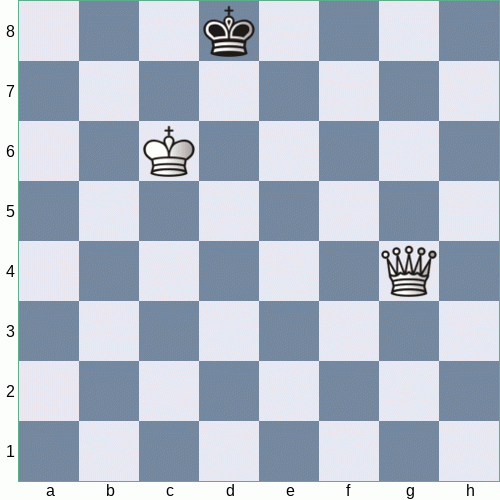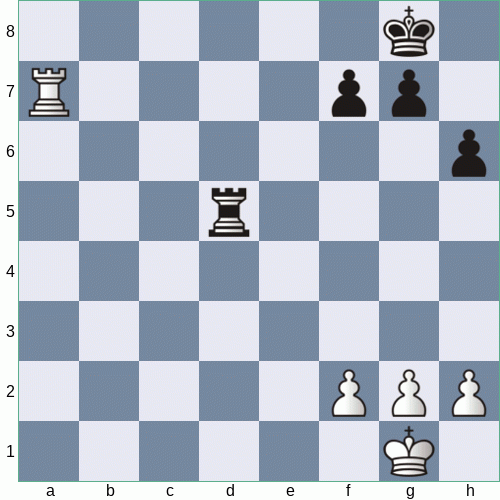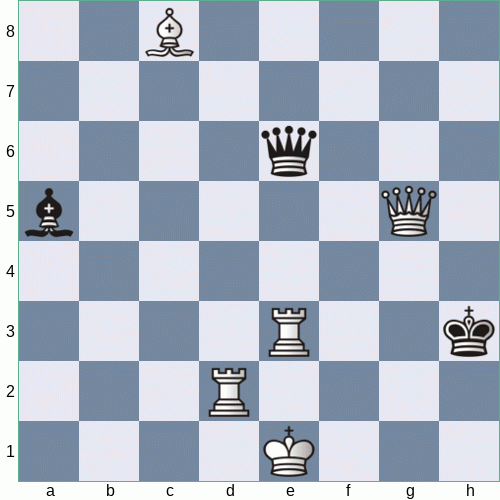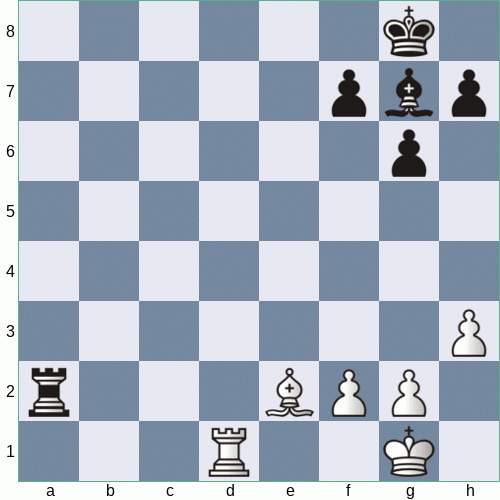Learning Center: Checkmate
Checkmate

Beginners often confuse checkmate with stalemate, but in checkmate the king is directly attacked (in check). Without check, there cannot be checkmate. For more details see Checkmate vs. Stalemate.
The position shown here illustrates a common type of checkmate. White has just moved his queen from g4 to d7, attacking Black's king. We now need to determine if Black can escape from check. Since he has no other pieces, we need only consider the possible king moves: c8, c7, d7, e7, and e8. All of those squares are attacked by either the white queen or king. As Black has no way to escape check, it is checkmate and the game ends as a win for White.
In common usage, checkmate is often shortened to simply "mate".

This diagram depicts a common mating pattern known as a "backrank mate". Black's rook places White's king in check, and controls all the squares along the first rank so that the white king is unable to escape by moving to either f1 or g1. Meanwhile the squares f2, g2, and h2 are occupied by white pawns, blocking any escape in that direction.
You may hear the expression "making luft", which refers to moving one of the pawns in front of the castled king to prevent getting trapped in this way. "Luft" is German for "air".
Note that if it were White's move rather than Black's, there would not be an analogous mate with Ra8 because the black can escape to h7 (i.e. the black king has "luft").

One simple example is the position shown here, from the end of the famous game Anderssen-Kieseritzky (1851). White is close to delivering checkmate by Be7, but the black knight could take the bishop on that square. So White first plays his queen on f6, forcing the black knight to capture it and thus abandon its post. With the e7 square now undefended, White can continue as planned with Be7, checkmate.

Some players might argue Black could play Qxe3. But that would expose the black king to check from the bishop on c8, so it does nothing to alleviate the attack on his king. The fact that his king is now attacked by a different piece than before is irrelevant. Also irrelevant is the fact that Qxe3 "checks" the white king; in chess, there is no such thing as "counter-check", you must get your own king out of check if you can, and if you can't it's mate.
Other players might argue that Black is not really in check at all, since the rook on e3 is "pinned" against the white king and thus could not "take" the black king. This is nonsense; essentially Black is arguing that he should be allowed to endanger his king because White should not be allowed to endanger his king.
In the same vein, some players might suggest that the black king can move to h2, since the rook on d2 "can't move" (due to the bishop on a5). But a piece doesn't have to move in order to check the enemy king, and h2 is definitely off-limits to the black king. Don't lose sight of the simple definition: if your king is in check and nothing you do gets you out of check, it's checkmate.
Now test your understanding on the following positions. Try to work out the answer yourself before clicking the "Reveal" button to verify. White played Rd8; is it checkmate?
White played Rd8; is it checkmate? White played Qb6; is it checkmate?
White played Qb6; is it checkmate? White played Qxg6; is it checkmate?
White played Qxg6; is it checkmate?



